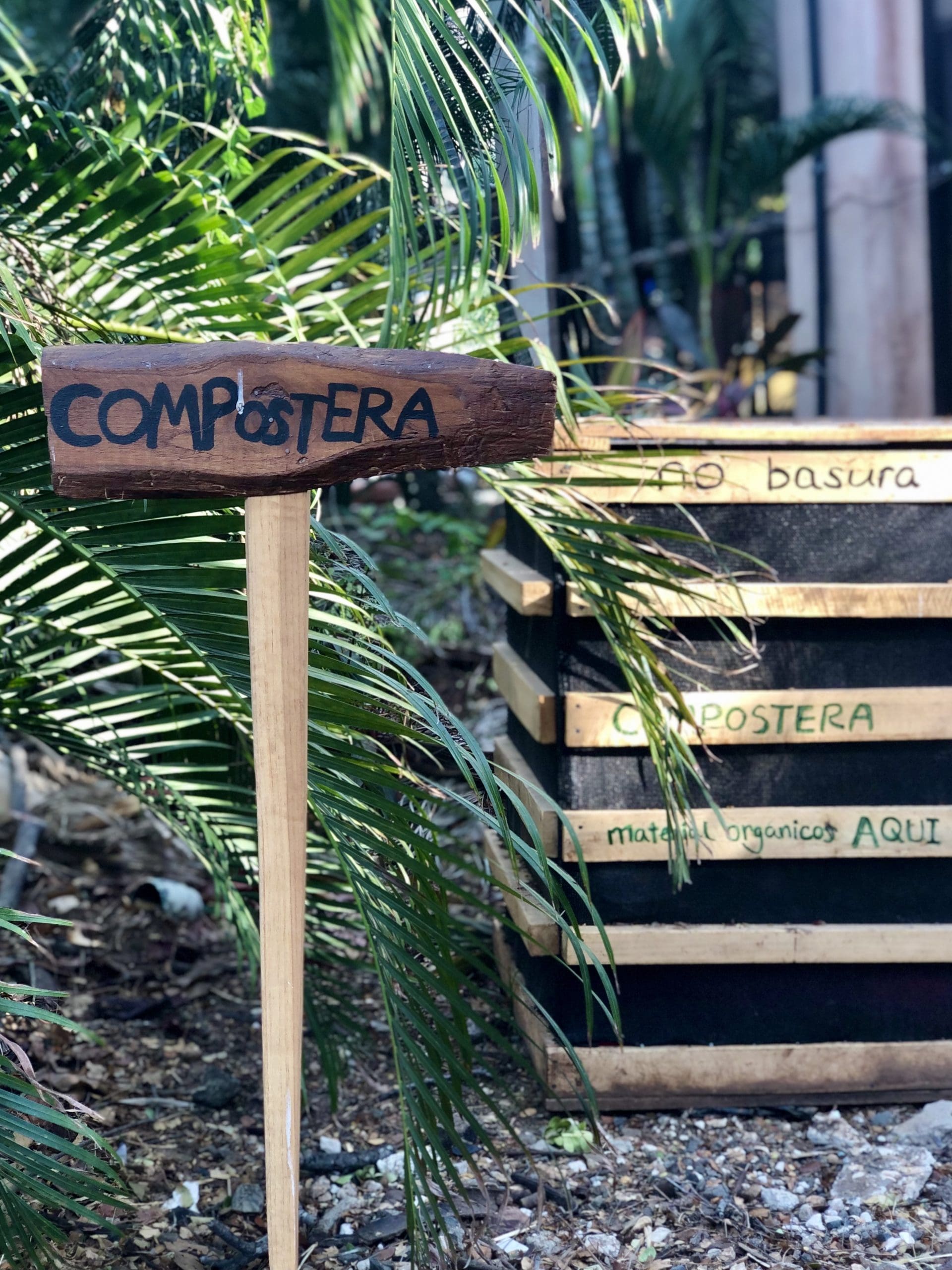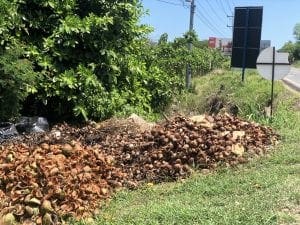
Got Organic Matter?
As Costa Rica pursues ambitious waste management solutions on a vast nationwide scale, one grassroots composting collection project in Tamarindo is setting an impressive example for other communities to make a close-to-home impact.
Waste not waste
In March 2021, the Costa Rican government deemed solid waste mismanagement to be “one of the biggest environmental problems” facing the country today. Even while dealing with ongoing pandemic priorities, the Presidency has brought forward national action plans that include building a waste transfer center and supporting environmental technology parks. A national composting strategy is being introduced as part of Costa Rica’s decarbonization plan to improve waste management, with the goal of eliminating organic matter from landfill sites by 2030.
See this article in the international digital magazine, click here!
Enjoy the audiovisual story – click here!

Black soldier fly larvae feasting the compost pile on my home site
But how are we getting there?
Infrastructure development and technological advancements are certainly important. However, with nearly half of all municipal solid waste generated in Costa Rica known to be organic matter, as one World Bank report pointed out, local composting initiatives seem like the obvious place to start. The most significant and manageable progress can begin by systematically organizing the disposal and processing of organic wastes at the local level.
Although Tamarindo recently welcomed the news that the municipality of Santa Cruz was introducing a service to collect recycling items from homes, a separate organic waste collection service has yet to be established.
Compost Collection Tama
Meanwhile, with the intention to fulfill an unmet demand for those who already attempted to compost their wastes, as well as to cultivate a new habit among community members, the Compost Collection Tama initiative was launched in December 2020. The pilot program site, at Oneida Park, has been very well received by the community, with consistently tangible feedback in the form of food scraps filling up the bins.
The project started out as a campaign in collaboration with the Tamarindo Food Bank and the farmers’ market hosted by Tamarindo’s Integral Development Association (ADIT) every Saturday morning. Access was later expanded when the first prototype compost bin was stationed at Oneida Park throughout the week. This made it possible for compost to be dropped off anytime, with program volunteers checking in a few times a week to aerate and add sawdust.
More recently, through collaboration with PlantaE, a company specializing in regenerative agriculture, a second composting bin was donated to the project. We have since been able to increase our yield and manage the two bins alternatively.
For the past three to four months, about 20 kilograms of food scraps have been received every week, as community interest continues to grow. At present, when the bin gets full, we transport the compost to a designated area of our land to be further aged. For the future, as the volume of compost continues to grow, we would love to have volunteers join us in running the project. We would encourage them to partner with property owners for the use of vacant lots, and to incorporate farm animals.
Why and how to compost
Composting is a biological process that returns what comes from the earth back to the earth. It has been a common practice throughout history and across continents.
In Chinese traditional agriculture, there is the concept of “堆肥” — to compile manure as fertilizers. And in the Amazon forest, early settlers used charcoal, along with other organic matter, to nourish the poor soil. This is achieved by using the biological and chemical stability of composted matter to retain nutrients and avoid further microbial degradation.
Generations of such practices eventually led to what we now know as terra preta, the incredibly fertile black soil that modern growers are replicating with various methods via organic matter decomposition.
Today, composting activities take place in a number of different ways. In some cities, compost collection kiosks can be found in the backyard of universities, community centers and at local farmers’ markets. In more rural settings, with a home garden, a few chickens, pigs or goats, or just some empty ground space, composting can be done domestically, allowing plants and animals to be fed along the way, before nutrients completing their full cycle return back to the earth.
Costa Rica’s tropical climate makes an optimal environment for organic matter to decompose naturally. Many people living here understand the value of a healthy compost pile, but struggle with issues like space limitation and hygiene concerns.
Apart from individual household occupants with the knowledge and experience to manage home composting themselves, not much community space or planning activity has been devoted to accommodating those wanting to properly dispose of their organic wastes. A centralized, volunteer-managed site at the community level would not only serve small local homes and businesses, but also events like the weekly ferias where fruit and veggie scraps are largely present.

Coconut husks tossed by the roadside in Huacas near the verdulería.
Be the change
Trash and recycling are standard practices. Solid waste collection may seem to be a duty of the municipality, but proper organic matter disposal is a responsibility that everyone can take into their own hands with community support and collaboration.
Since Costa Rica’s Rio Azul dump closed almost 15 years ago, landfill sites are filling up every day in and around the Central Valley, usually in proximity to some of the most deteriorated neighborhoods in the country.
Back in 2019, I visited Costa Rica’s now-biggest landfill, at La Carpio in San José. The immensity of the operation and the continuous release of white methane gas through underground pipes are hard to forget.
Organic waste management at the national level, with techniques such as composting, requires organization, scale and coordination between the different municipalities and central level actors. In addition, changes in citizen behavior are required to achieve this at a manageable cost. And that is precisely the reason why we must begin at the community level, carrying out the change we’d like to see and benefit from.
